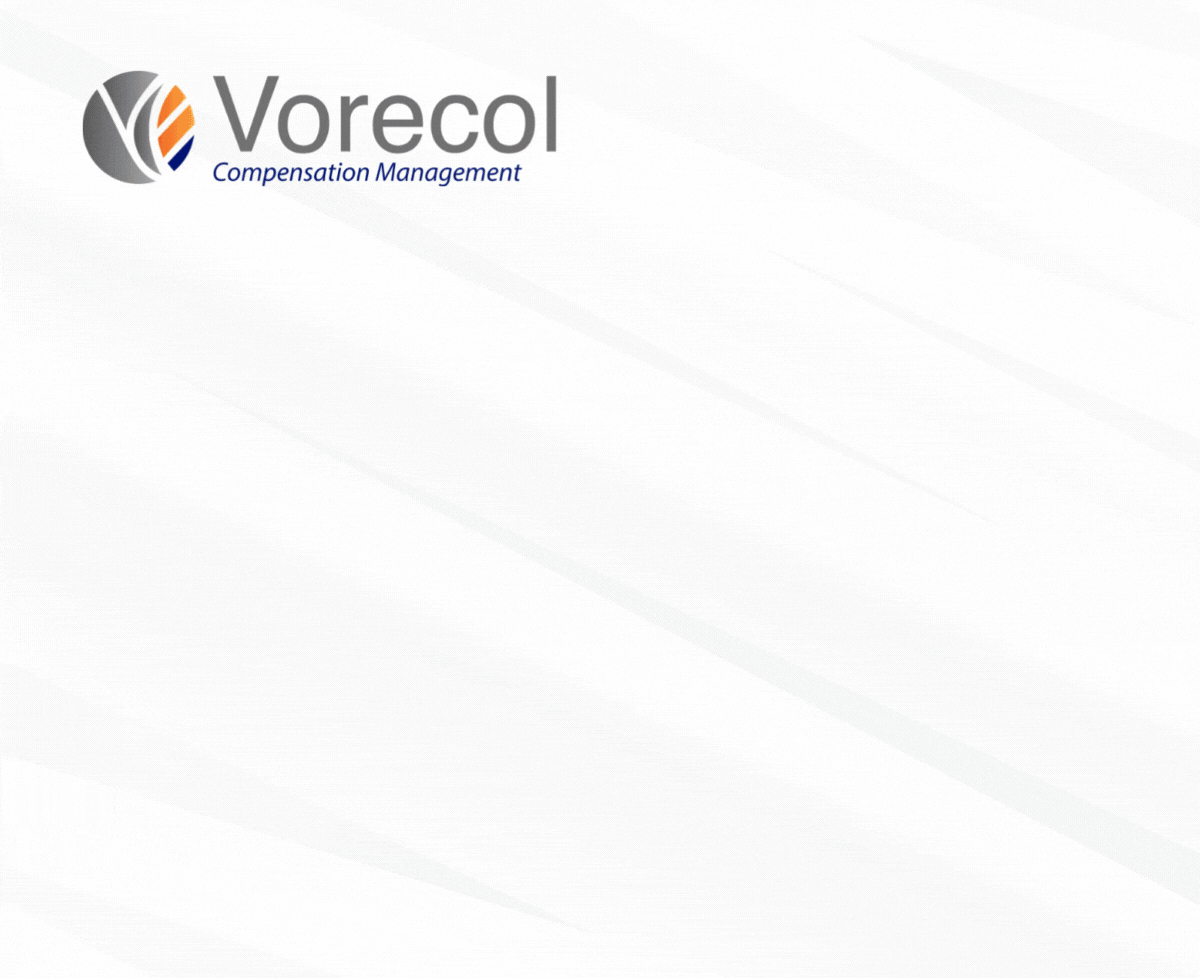Best Practices for Implementing Employee Financial Wellness Programs

- 1. Understanding the Importance of Employee Financial Wellness
- 2. Key Components of an Effective Financial Wellness Program
- 3. Assessing Employee Needs Through Surveys and Feedback
- 4. Tailoring Financial Education to Diverse Employee Demographics
- 5. Strategies for Promoting Participation in Financial Programs
- 6. Measuring the Success of Financial Wellness Initiatives
- 7. Overcoming Common Challenges in Implementation
- Final Conclusions
1. Understanding the Importance of Employee Financial Wellness
In a world where financial stress affects nearly 77% of American workers, understanding the importance of employee financial wellness has never been more crucial. Imagine Sarah, a dedicated employee at a mid-sized tech company, constantly worried about paying her mortgage and managing student loans. This stress not only impacts her personal life but also her productivity at work. According to a recent study by PwC, companies that prioritize financial wellness programs report a 24% decrease in employee turnover and an impressive 29% increase in employee productivity. With over two-thirds of employees expressing a desire for financial guidance, organizations that implement effective financial wellness initiatives can foster a more engaged and committed workforce.
The narrative shifts further when we delve into the tangible benefits of promoting financial wellness in the workplace. A study by the Employee Benefit Research Institute revealed that increased financial literacy among employees can lead to a remarkable increase in job satisfaction—up to 41%. Consider James, a factory worker who received financial education sessions provided by his employer. Not only did his financial knowledge improve, but so did his overall morale, leading to a 15% uptick in team productivity. With businesses losing nearly $500 billion annually due to unproductive employees, investing in financial wellness isn’t just ethical; it’s a savvy business decision. By nurturing employees’ financial security, companies can create a robust culture of trust, resilience, and success.
2. Key Components of an Effective Financial Wellness Program
In today’s fast-paced corporate environment, the financial wellness of employees has emerged as a cornerstone of overall productivity and satisfaction. A study by the Employee Benefit Research Institute reveals that approximately 1 in 4 workers report feeling stressed about their financial situation, which can lead to decreased performance and job satisfaction. Companies like Aflac have recognized this trend, reporting that organizations with robust financial wellness programs see a 47% increase in employee engagement. This indicates that a well-structured financial wellness initiative not only mitigates stress but also actively fosters a positive work culture, leading to lower turnover rates and a more enthusiastic workforce.
One key component of an effective financial wellness program is personalized financial education. According to a survey conducted by Financial Health Network, employees who participated in tailored financial coaching reported a 48% improvement in their overall financial well-being. Further highlighting the importance of personalized guidance, Fidelity Investments found that organizations offering comprehensive financial planning services experienced a 15% reduction in absenteeism. These compelling statistics illustrate the transformative power of customized financial education, showcasing how companies can empower their employees not only to achieve their financial goals but also to enhance their loyalty and commitment to the organization.
3. Assessing Employee Needs Through Surveys and Feedback
In today’s fast-paced corporate landscape, understanding employee needs is not just a luxury but a necessity for sustained organizational success. According to a 2022 study by Gallup, companies that actively seek feedback through employee surveys see a 14.9% increase in productivity. Imagine a manufacturing company that was struggling with high turnover rates; after implementing quarterly surveys and addressing employee concerns about work-life balance, they reduced turnover by 30% within just six months. This transformation was not merely a stroke of luck; the company leveraged the insights gained from employees to shape policies and improve workplace culture, illustrating how a simple survey can catalyze significant change.
Moreover, feedback mechanisms not only enhance operational efficiency but also boost employee morale. Research conducted by IBM indicates that organizations that prioritize employee feedback enjoy a 15% increase in engagement levels. One tech startup, facing dwindling engagement metrics, initiated annual pulse surveys to gauge employee sentiment. Following this approach, they identified a pressing need for career development opportunities and promptly introduced mentorship programs. The result? A staggering 40% rise in employee satisfaction scores within the year. These stories exemplify that harnessing the power of employee surveys is a game-changer, allowing companies to align their objectives with the evolving needs of their workforce.
4. Tailoring Financial Education to Diverse Employee Demographics
In a rapidly changing workplace, one of the biggest stories unfolding is the need for tailored financial education that resonates with an increasingly diverse employee demographic. According to a study by the Financial Industry Regulatory Authority (FINRA), nearly 66% of American adults lack basic financial literacy skills, highlighting a significant knowledge gap. In a diverse workforce, this is compounded by differing cultural backgrounds and financial experiences. For instance, employees from various ethnic backgrounds may have varied attitudes towards debt, savings, and investments. Tailoring financial education programs to meet these unique needs not only fosters a more inclusive environment but can significantly enhance employee engagement. A survey by the National Endowment for Financial Education found that 52% of employees expressed a desire for personalized financial education that aligns with their specific circumstances and goals.
One company, a leading tech giant, recognized this need by segmenting its financial workshops based on demographics, ultimately serving over 10,000 employees. As a result, they reported a 30% increase in participation rates and a 25% improvement in employee confidence regarding financial decision-making. Notably, their program included workshops in multiple languages and focused on real-life scenarios relevant to various employee lifestyles, from young professionals to those nearing retirement. This strategy not only empowered their workforce but also contributed to financial wellness, with a subsequent survey revealing that 70% of participants felt more prepared to meet their long-term financial goals. Such statistics underline that when financial education is tailored to the diverse fabric of a company's workforce, it transforms from a rigid framework into a powerful tool for empowerment and growth.
5. Strategies for Promoting Participation in Financial Programs
In the bustling heart of New York City, a small tech startup named FinTech Innovate faced a challenge as daunting as a skyscraper. Despite launching a robust financial literacy program, they found that only 30% of their employees actively participated. Aiming to turn the tide, they implemented strategies rooted in behavioral economics, such as social proof and gamification. By showcasing real-time participation statistics on a leaderboard and offering incentives like extra vacation days, engagement soared by 60% within just three months. This shift not only fostered a learning environment but also enhanced overall employee satisfaction, demonstrating how innovative reminders and friendly competition can stimulate greater involvement in financial programs.
Meanwhile, across the country, a nonprofit organization focused on community empowerment discovered a treasure trove of data through their financial mentorship initiative. They learned that participants who received personalized coaching increased their savings by an astonishing 45% within six months. By utilizing storytelling as a strategy—sharing success stories of individuals who transformed their financial situations—program coordinators reported a 70% increase in enrollment rates. As participants saw their peers' triumphs, they were inspired to embark on their own financial journeys, proving that relatable narratives can significantly boost participation and drive meaningful financial behaviors in diverse populations.
6. Measuring the Success of Financial Wellness Initiatives
In a world where financial stress can significantly impact employee productivity and overall well-being, businesses are increasingly investing in financial wellness initiatives. For instance, a recent survey conducted by the Employee Benefit Research Institute found that 70% of workers believe financial stress impacts their job performance. Companies that have developed comprehensive financial wellness programs, like Bank of America, reported a remarkable 20% reduction in employee turnover, resulting in savings of approximately $1 million annually. The numbers speak volumes: organizations that prioritize financial wellness see a 24% increase in employee engagement and satisfaction scores, which directly correlate to improved company culture and productivity.
However, measuring the success of these initiatives is crucial for continuous improvement. Data from the Global Financial Wellness Survey revealed that companies employing metrics such as participation rates, employee feedback, and pre-and post-program surveys experienced a 30% greater return on investment in their financial wellness programs. Companies like Starbucks and Google have adopted robust analytics to track these metrics, translating them into tangible benefits, including a significant reduction in healthcare costs associated with stress-related illnesses. As organizations strive to foster a financially healthy workforce, the effectiveness of these initiatives can create a compelling narrative of success, benefiting both employees and employers alike.
7. Overcoming Common Challenges in Implementation
In the realm of project implementation, challenges often loom like dark clouds on the horizon. A recent survey by the Project Management Institute (PMI) revealed that 70% of organizations face difficulties in executing their projects effectively, with a staggering 30% failing to meet initial goals. These obstacles often stem from inadequate communication, lack of stakeholder engagement, and insufficient training. For instance, a case study by McKinsey & Company shows that projects with proactive stakeholder involvement are 50% more likely to achieve their desired outcomes. To turn the tide, companies like Siemens have adopted agile methodologies, resulting in a 20% increase in project delivery speed within just six months of implementation.
As organizations navigate these implementation minefields, it becomes essential to craft a compelling narrative around change. Research from Prosci indicates that organizations that prioritized change management saw success rates soar to 96%, compared to a mere 34% for those that did not. One telling instance involves a healthcare provider that struggled with rolling out an electronic health record (EHR) system, facing nearly $1 million in losses due to low staff compliance. By embedding storytelling into their training sessions—highlighting real-life scenarios where efficient EHR use improved patient outcomes—the organization witnessed a 30% boost in user adoption within weeks. Hence, the key to overcoming common implementation challenges lies not only in addressing the technical aspects but also in embracing the human element through effective communication and storytelling.
Final Conclusions
In conclusion, implementing employee financial wellness programs is not just a valuable benefit but a strategic investment in the overall health of an organization. By prioritizing financial literacy and offering tailored resources such as workshops, one-on-one coaching, and access to financial planning tools, employers can empower their workforce to take control of their financial futures. This, in turn, enhances employee satisfaction, reduces stress, and can lead to improved productivity and lower absenteeism rates. Furthermore, organizations that adopt these programs demonstrate a genuine commitment to their employees' well-being, fostering a positive corporate culture that attracts and retains top talent.
Moreover, measuring the effectiveness of these programs is crucial for continuous improvement and demonstrating their impact. Organizations should employ metrics such as employee participation rates, feedback surveys, and improvements in financial behavior over time. Incorporating employee input into the development and refinement of these programs ensures they are relevant and meet the evolving needs of the workforce. By adhering to best practices and remaining adaptable, companies can create a robust financial wellness initiative that supports employees in navigating their financial challenges, ultimately contributing to a more engaged, productive, and resilient workforce.
Publication Date: August 28, 2024
Author: Psico-smart Editorial Team.
Note: This article was generated with the assistance of artificial intelligence, under the supervision and editing of our editorial team.
Leave your comment
Comments
Request for information
Fill in the information and select a Vorecol HRMS module. A representative will contact you.
- Australia+61
- Bahamas+1
- Barbados+1
- Canada+1
- Ghana (Gaana)+233
- Guyana+592
- Hong Kong (香港)+852
- India (भारत)+91
- Ireland+353
- Jamaica+1
- Kenya+254
- Malta+356
- New Zealand+64
- Nigeria+234
- Pakistan (پاکستان)+92
- Philippines+63
- Singapore+65
- South Africa+27
- Trinidad and Tobago+1
- Uganda+256
- United Kingdom+44
- United States+1
- Zimbabwe+263



